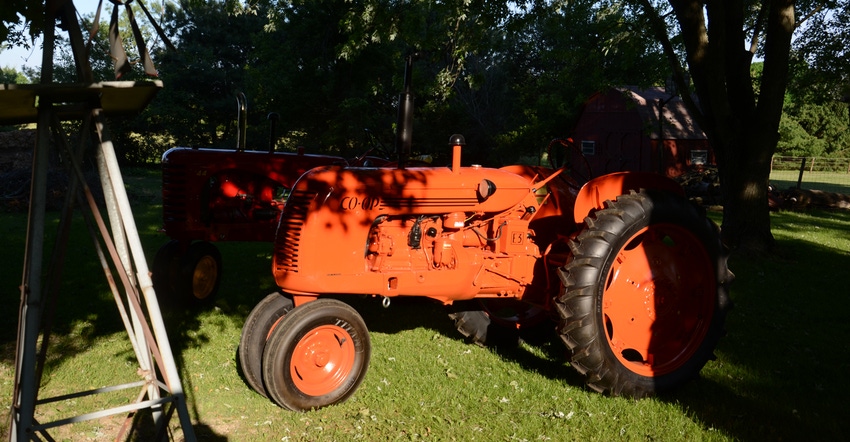February 28, 2019

My first real encounter with a Co-op tractor was when I started dating Carla, my wife. Her father, Erwin German, owned a Co-op E3. It was parked behind his barn and hadn’t run in years. Who made this simple-looking orange tractor?
The answer isn’t simple at all. According to tractordata.com, and verified through other sources, five companies made Co-op-branded tractors over two decades.
Before shedding more light on this hodgepodge history, let me share my next encounter with the brand. The very first toy tractor I purchased was a Co-op E Series 1/16th model at a New Year’s Day live toy auction in the 1990s. I hadn’t caught the toy collector’s bug yet — I just liked auctions. This model tractor was one of the few things I could afford that day. Later, I sold some of my first toy tractors to raise money for a calf shed so my youngest daughter could show dairy steers, and I let the Co-op sell. Bad decision.
Later I caught the tractor collector’s bug, big time. Among my purchases was a red, bulky-looking 1/16th model labeled as a Co-op No. 1. When I sold some toys again last fall so I could walk through my office, I let that one go. Now that I’m learning where it fits in the company’s history, I may buy one back.
Make sense? Probably not. Neither does Co-op tractor history. Here’s the story:
Different makers
Dent Parrett, who originally built the Parrett tractor, designed a Co-op tractor because farmers were looking for a simple tractor they could afford. According to tractordata.com, it was built in Michigan with lots of Chrysler components. Then production moved to Indiana, somewhere around Shelbyville, although some production went to St. Paul, Minn., and Cletrac contributed some models. These were red Co-ops. Models included the No.1, No. 2, No. 3, B1, B2, B2 Junior and G, ending during the war years in 1941. A model B3, C and D3 appeared through the mid-’40s.
After World War II, Cockshutt built Co-op tractors in the U.S. The E3 appeared in 1946 and the E4 in 1947. The model 3S appeared in 1948. The E3 was a Cockshutt 30 with orange paint.
The E2 — there was no E1 — appeared in 1952, and the E5 in 1953. Due to poor sales, facilities were sold to Cockshutt in 1952. The last Co-op tractor was made in 1958.
If it sounds like a hodgepodge of models and numbers, it is. The history of toy versions is similar. Different companies made different models, but to my knowledge, no one mass-produced a 1/16th E3, which was perhaps the most popular Co-op tractor.
Which brings me back to my father-in-law’s E3. It was likely beyond repair and wasn’t in our control, but Doug Walker, ag teacher at Delphi High School, found another E3 — a one-owner tractor for which I now have the original bill of sale. After doing far more repairs than expected, he and his ag students restored it to prime condition.
In fact, before they delivered it to me and my wife, they took it to a tractor show at Clinton County, Ind., and it won a prize as the oldest Co-op. When Walker delivered the tractor, he brought the prize: a clock featuring different models at each hour. But guess which models are on the clock? That’s right, Cockshutt tractors, not Co-ops. Somehow, perhaps it all makes sense — or not!
Comments? Email [email protected].
You May Also Like




